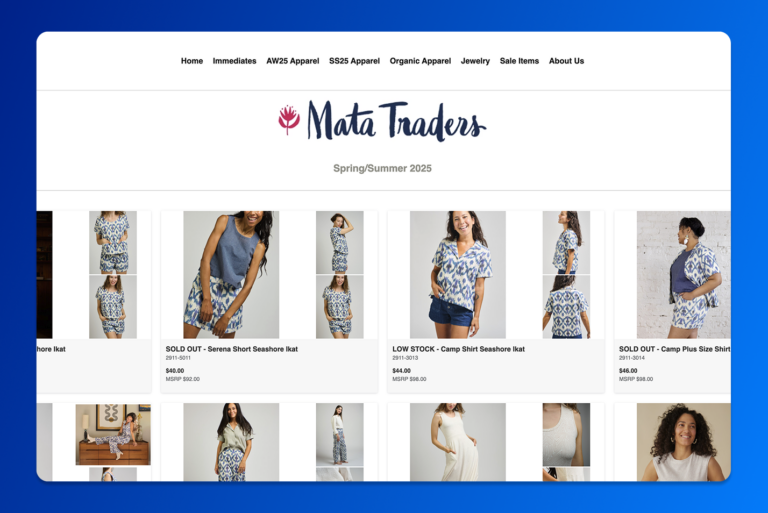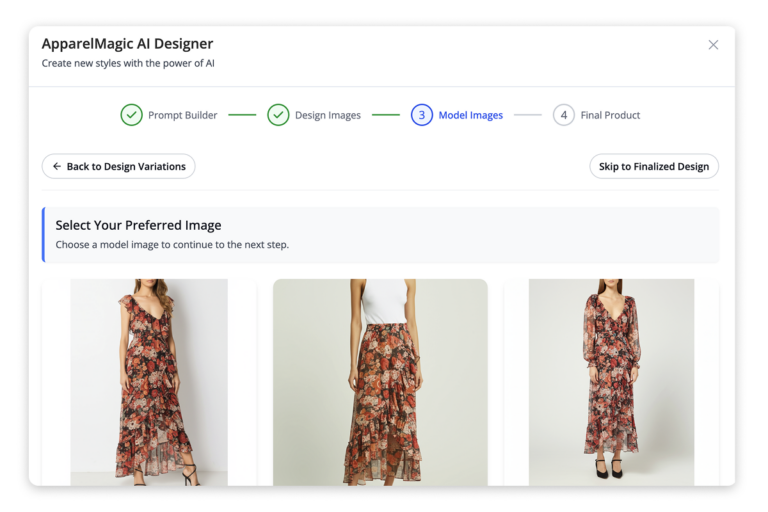
Manufacturing quality assurance is crucial for any business that strives to provide its customers with top-notch products. As a company, your ultimate goal is to deliver products that meet and exceed your customers’ expectations. The significance of maintaining high standards cannot be understated, as failure to do so could result in significant consequences, such as tarnishing the reputation of your business and a decrease in your client base.
Picture this, a client purchased a brand new, stylish outfit that they are excited to wear. The fabric feels fantastic, and the fit is just right. But after only a few washes, they notice the seams are coming apart, and the color is fading rather quickly.
That once trendy ensemble is now destined for the donation bin. So, what happened? Chances are, there was a lack of quality assurance in the production of that ill-fated garment. As a business owner, you know that means you can kiss goodbye to the customer’s trust and expect to read a bad review somewhere online.
Luckily, the process of manufacturing quality assurance exists so that these instances never occur. Let’s explore this topic in-depth and help you ensure you only provide your customers with reliable products.
Quality Control vs. Quality Assurance
Now, you might be wondering what quality assurance is and how it differentiates from quality control. While many people use these terms interchangeably, they actually refer to different aspects of the clothing production process.
Quality control (QC) is the process of examining and testing the final products to ensure they meet the desired level of quality. It’s the last line of defense before the clothes hit the racks, and it helps to catch any defects or inconsistencies.
On the other hand, quality assurance encompasses all the measures taken throughout the production process to guarantee a high-quality end product. It’s a proactive approach that involves everything from raw material selection to design, manufacturing, and even employee training.
Quality Assurance in Clothing Production Process
In the context of clothing production, QA is about more than just ensuring that garments are defect-free – it also encompasses aspects such as design, sustainability, and ethical production practices.
The process typically involves a combination of pre-production checks (inspection of raw materials and approval and examination of design specifications by quality managers), in-process monitoring (seam strength, fabric weight, color consistency, etc.), and final inspections (examination of completed garments for defects, size accuracy, and overall quality).
By implementing robust quality assurance programs, clothing manufacturers can ensure that their products meet or exceed expectations, forging brand loyalty and trust among consumers.
Preventing Defects and Elevating Product Quality
From the selection of textiles and thread to the intricacies of stitching and finishing, there are numerous opportunities for defects to emerge in the clothing production process. Implementing a thorough QA process not only helps prevent these issues from arising but also promotes a culture of continuous improvement within the organization.
According to First Insight, people are not out just to find the best bargain option but rather a piece of clothing that’s durable and high in quality. What you can do is offer customers the best of two worlds – fair prices and solid quality.
Benefits of Quality Assurance in Clothing Production
1. Ensuring Consistent Quality
A robust quality assurance system ensures that all garments produced are of the highest quality possible. This means that each piece of clothing undergoes various checks and tests throughout its production lifecycle. Manufacturers can identify and rectify any defects or discrepancies early, avoiding the costly consequences of delivering flawed products to the market.
2. Cost Reduction
Reducing costs without sacrificing quality is crucial in an industry where razor-thin profit margins determine success. By addressing potential issues early, quality assurance can save manufacturers thousands, or even millions, in recalls, returns, and lawsuits. An efficient QA process can also lead to improved time-to-market, increasing overall profitability for the manufacturer.
3. Compliance With Industry Standards
Regulations and standards for clothing production vary depending on region, target market, and product type. Implementing a solid quality assurance system ensures adherence to these regulations, reducing the likelihood of breaching industry quality requirements or encountering legal complications.
4. Enhanced Brand Image
A consistent record of delivering high-quality clothes bolsters a brand’s image and reputation on the market. Satisfied customers are more likely to make repeat purchases and recommend a brand to their friends and family. By investing in quality assurance, clothing manufacturers can cultivate a loyal customer base and prosper in today’s increasingly competitive marketplace.
5. Responsibly-Sourced Materials and Ethical Production Practices
With the rising concerns over environmental impact and fair labor practices, a proactive quality assurance process helps manufacturers to adhere to sustainable and ethical practices. By monitoring and controlling the production process, QA can play a vital role in meeting the ever-growing demand for socially responsible clothing.
The consequences of neglecting even the tiniest aspect of quality assurance are manifold. Inadequate QA can lead to a decline in perceived value, customer dissatisfaction, and decreased sales for clothing manufacturers. It can expose companies to regulatory penalties and environmental concerns, damaging their reputation beyond repair. To remain competitive and meet global standards, quality assurance is not just a suggestion – it’s an imperative.
Investing in a reliable system and following the best quality assurance practices will not only help your business thrive in the long run but will also contribute to building a more responsible and consumer-centric fashion industry.

Common Quality Assurance Techniques
Among the most commonly used techniques are complete end-to-end management of operations, inspection audits, lab testing, and sampling.
End-to-end management of all your apparel business processes is a breeze with the right solution. Although not all manufacturers have incorporated a fully automated system to guarantee the quality of products, more and more companies are moving towards Enterprise Resource Planning (ERP) systems with comprehensive quality assurance features.
These solutions provide the necessary tools to manage quality assurance objectives throughout the supply chain, from assessment to distribution. With ERP systems, quality assurance teams can track all systems and subsystems in the production cycle for flaws or defects.
This ensures that the finished products are uniform, of premium quality, and safe for the consumers.
Inspection audits involve a systematic review of the production process, from the selection of raw materials to the final output. This helps identify any potential flaws or deviations from the agreed-upon quality standards. By closely monitoring production, fashion companies can address and rectify issues timely, ensuring a more consistent and reliable product. However, the inspection aspect can also be labor-intensive and may inadvertently overlook minor defects or inconsistencies.
Lab testing is another popular method employed within the fashion industry to evaluate the quality and performance of various materials and finished products. This technique includes tests, such as colorfastness, shrinkage, and fabric strength, to ensure the longevity and durability of the garment or accessory. Although lab testing provides valuable information on the performance of a product, it may not cover all aspects or foresee real-life scenarios of wear and tear.
Sampling involves randomly selecting a certain percentage of garments from a batch or production run and thoroughly inspecting them for quality. This helps identify any defects or inconsistencies in the finished garments and determine the batch’s overall quality level.
Implementing Quality Assurance in Clothing Production
To implement quality assurance effectively, each step of the process we’ve discussed above must be carefully monitored, beginning with identifying any defects before the product leaves the production line. Practical solutions to address and fix mistakes should be implemented, and ways to prevent them from reoccurring should be identified.
Finally, maintaining high standards is paramount to ensure customer satisfaction and preserve the brand’s reputation. By prioritizing quality assurance at every stage of clothing production, companies can deliver high-quality products and maintain a competitive edge in the industry.
The Challenges of Implementing Quality Assurance in Clothing Production
By now, you are very familiar with the purpose of quality assurance in clothing production, but that does not mean it’s something businesses quickly establish. One of the main challenges is ensuring that quality standards are consistent throughout the production process, from sourcing materials to the final product.
However, with the right software solutions and training your team to properly and diligently carry out each quality assurance protocol, your customers will always wear durable fashion pieces.
The Role of Quality Assurance in Sustainable Clothing Production
Manufacturing quality assurance plays a vital role in ensuring that sustainable clothing production is environmentally friendly, socially responsible, and economically viable. By implementing quality assurance procedures, brands can monitor their entire production process, from the sourcing of materials to the final delivery of garments to customers.
By controlling each step of the supply chain, brands can ensure that materials are environmentally friendly, that they engage in ethical labor practices, and that the production process is free from harmful chemicals or treatments.
Quality assurance also ensures that garments are durable, long-lasting, and ethically made, reducing waste and minimizing environmental impact. This, in turn, will reduce the need for frequent replacements, leading to a more sustainable fashion industry.
Bottom Line
Manufacturing quality assurance is a critical aspect of any successful clothing business. It goes beyond just checking for defective products; it involves a proactive approach throughout the production process, from raw material selection to managing manufacturing processes and even employee training.
By implementing a robust quality assurance system, clothing manufacturers can take preventive action against defects, elevate product quality, reduce costs, comply with industry standards, enhance brand image, and promote sustainable and ethical practices.
You should also consider getting certified by the American Society of Quality to ensure that your whole organization operates safely and effectively.






